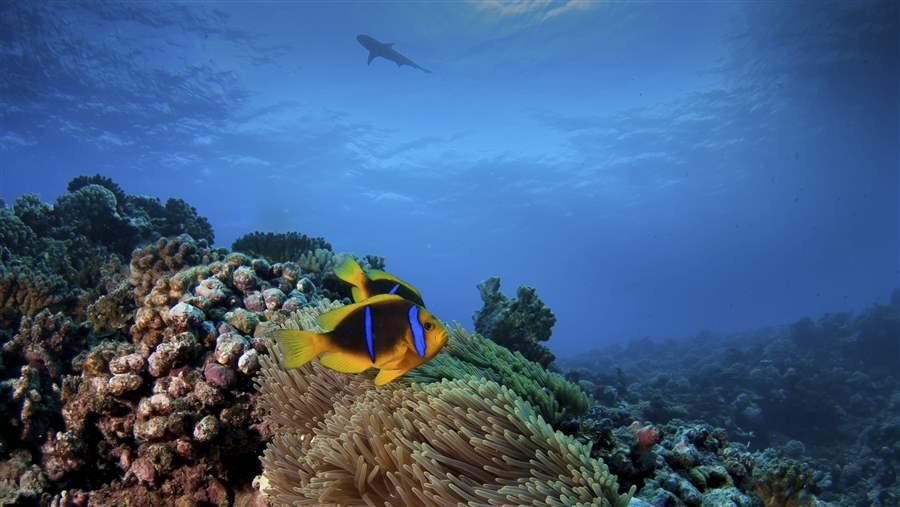Protecting 30 Percent of the Ocean Brings Multiple Benefits
New literature review highlights widespread agreement among scientific studies
 © iStockphoto
© iStockphotoMarine reserves are widely recognized as vital for conserving both biodiversity and the fish populations. An analysis by Bethan O’Leary and Callum Roberts finds a remarkable consensus that protecting 30 to 40 percent of an ocean area is necessary.
Scientific studies often address narrowly focused questions, but sometimes scientists bundle many answers together to address bigger questions, such as how best to manage the global ocean. A just published review of previous studies, for example, contains a surprising big-picture finding: It pays to set aside at least 30 percent of the sea in marine protected areas (MPAs).
Marine reserves and other types of MPAs are widely recognized as vital for conserving both biodiversity and the fish populations needed for healthy fisheries. However, only about 2 percent of the ocean is currently set aside as fully protected MPAs. In 2010, the United Nations Convention on Biological Diversity set a target of expanding coverage to at least 10 percent of ocean waters by 2020; the full U.N. also adopted this percentage as part of its sustainable development goal on ocean conservation.
More recently, though, a consensus has been building that more might be needed. In 2014, the International Union for Conservation of Nature's World Parks Congress recommended protecting at least 30 percent.
University of York scientists Bethan O’Leary and Callum Roberts, the lead authors of the study published March 21 in the peer-reviewed journal Conservation Letters, set out to examine what targets for protection might be appropriate for different ocean management goals. They searched the scientific literature for studies that looked at a specific goal and the proportion of an ocean area that should be protected to achieve it. They found 144 studies that examined a wide range of objectives, including protecting biodiversity, ensuring that populations in different parts of a species’ range can move from one MPA to another, avoiding the collapse of fisheries or specific species populations, maximizing fisheries value or yield, and minimizing trade-offs among stakeholders with at times competing interests.
The analysis in “Effective Coverage Targets for Ocean Protection” finds a remarkable consensus that protecting 30 to 40 percent of an ocean area is necessary to achieve many of these individual management goals. More than half of the 144 studies concluded that at least 30 percent of the area under consideration had to be set aside to achieve the stated goal. Only a tiny fraction found that 10 percent was sufficient.
This was true regardless of the goal being considered. In other words, if the objective is to protect biodiversity, the majority of studies suggest setting aside at least 30 percent of the management area. If it is to maximize fisheries value or yield, or to satisfy multiple stakeholders, most studies again recommend protecting at least 30 percent of those waters. It’s important to note that none of the studies looked at the global ocean in its entirety. Still, taken together, they provide solid evidence that 10 percent is not enough.
These results come at an opportune time. A U.N. Preparatory Committee looking at how to better protect international waters will start its first meeting March 28. The group will begin negotiations on an international treaty to conserve and protect marine biodiversity in areas beyond national jurisdiction, more commonly known as the high seas.
The new study provides key insights into the important role that protected areas play in achieving diverse conservation and socioeconomic goals. The findings should help advance discussions about coverage targets going forward.
The study was supported by The Pew Charitable Trusts, which works with scientists to inform the organization’s conservation objectives.
Rebecca Goldburg directs Pew’s environmental science programs.


This video is hosted by YouTube. In order to view it, you must consent to the use of “Marketing Cookies” by updating your preferences in the Cookie Settings link below. View on YouTube
This video is hosted by YouTube. In order to view it, you must consent to the use of “Marketing Cookies” by updating your preferences in the Cookie Settings link below. View on YouTube







